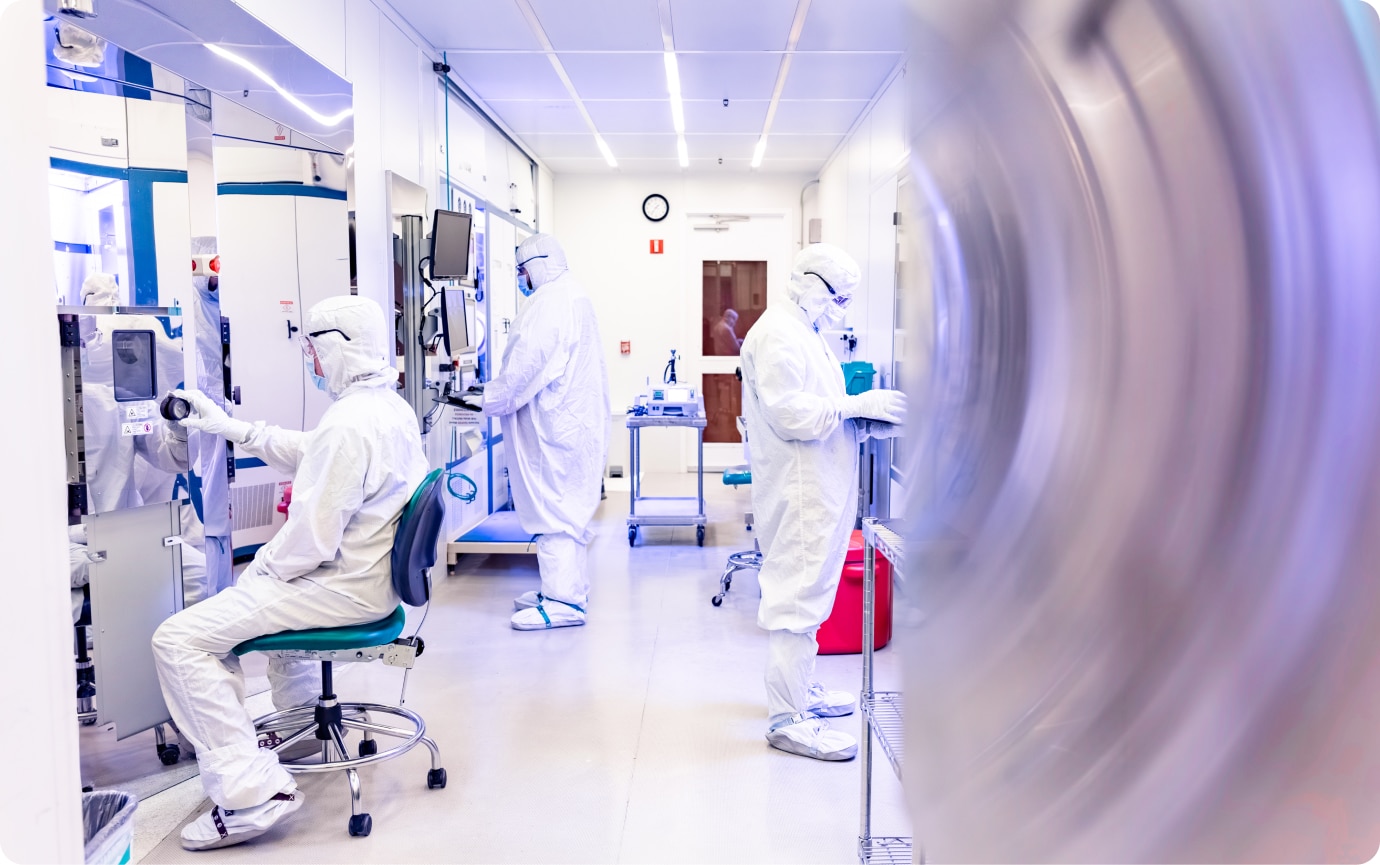Etching
Atomica offers Deep Reactive Ion Etching (DRIE), Reactive Ion Etching and wet etching capabilities, where the process technologies need to be matched to the design requirements.

Atomica’s Advanced Deep Reactive Ion Etching (DRIE), Reactive Ion Etching (RIE) and Wet Etching capabilities
Atomica offers both dry (RIE, DRIE, ion milling) and wet etching capabilities, where the process technologies need to be matched to the design requirements. Our Deep reactive ion etching (DRIE) capability allows anisotropic etching of silicon which is useful for etching of close-tolerance comb fingers, vias or holes, and trenches.
Specs:
Deep Reactive Ion Etching:
- Ultra-smooth vertical walls
- Better than 50:1 aspect ratio
- 90° sidewall angle
- Useful for etching of close-tolerance comb fingers, vias or holes, and trenches
Reactive Ion etching:
- Silicon, quartz, oxide, nitride, polysilicon, oxynitride, Ti, TiW, Nb
- Wafer edge protection for KOH/TMAH mask etch layers
- Deep trench oxide etch (for removal of oxide at bottom of silicon trenches, up to 10:1 aspect ratio)
Wet Etching:
- Atomica has experience with: Au, Ti, Cu, Cr, Si, SiO2, NiFe, Al2O3, CoNi, NiCo and solder
- Thickness: from 1 µm up to 50 µm
Other Capabilities
Why Atomica?
Atomica focuses on the success of our customers’ products, with rapid prototyping and scalable production. We are a leader in microfabrication, including photonics, sensors, biotechnology, and MEMS. We provide customers device optimization, faster speed to market, and cost-efficient fabrication. Atomica operates a 30,000-square-foot class 100 cleanroom near Santa Barbara, California, supporting a wide range of capabilities and materials with ISO 9001 certification and ITAR registration. We leverage sophisticated process control analytics, artificial intelligence inspection, advanced metrology, and proprietary fab operations systems to maximize efficiency.


Next Steps

Master Deep RIE: Atomica’s Expertise, Techniques and Tool Set in DRIE

Talk to our engineering team about your Dry or Wet Etching project

Learn more about Atomica’s Omega Rapier Plasma Etch Capabilities